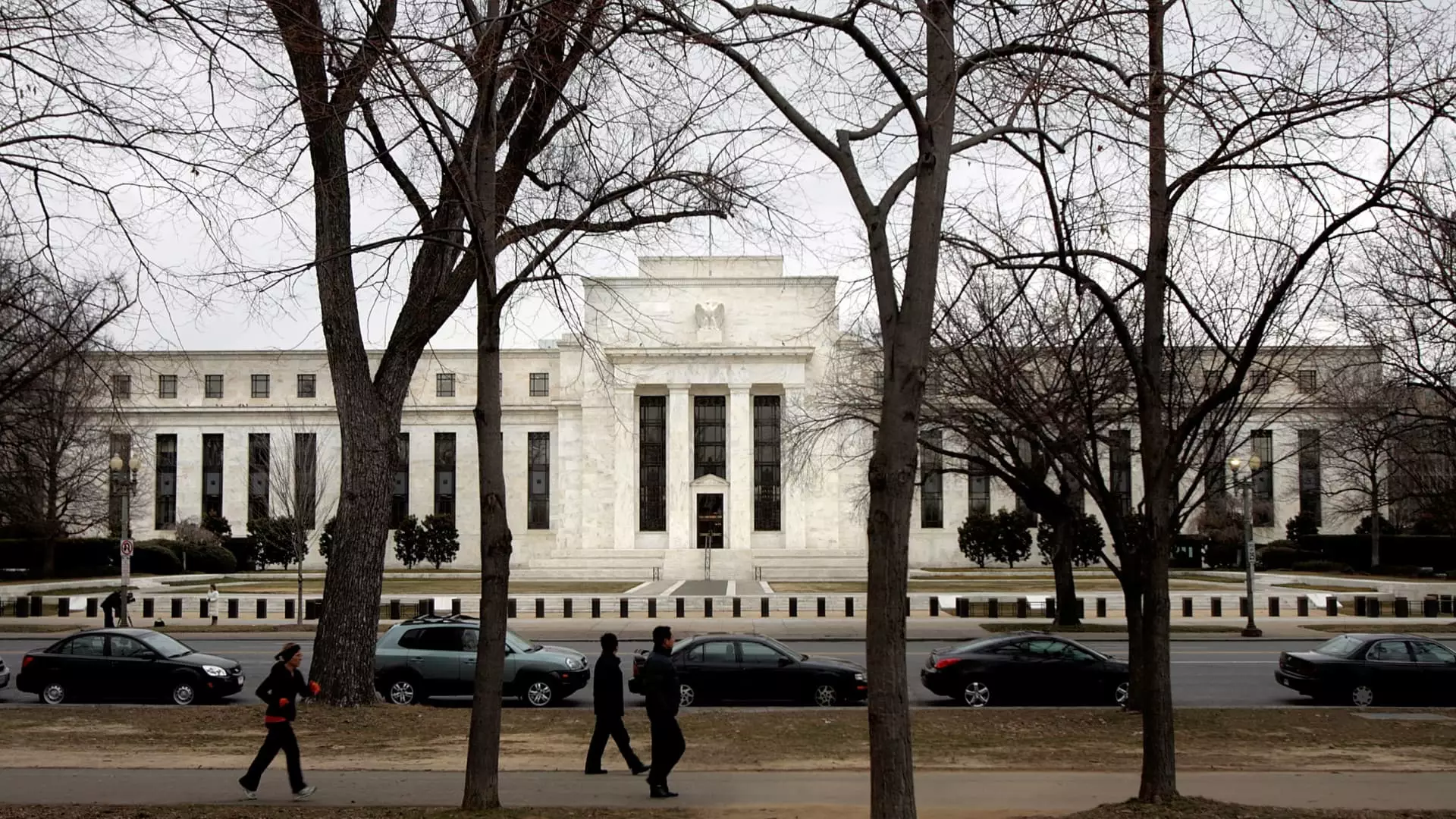The Federal Reserve plays a crucial role in maintaining economic stability, and its recent decision to hold interest rates steady has stirred significant conversations among economists, consumers, and politicians alike. Amid ongoing inflationary pressures that surpass the Fed’s established target of 2%, it is essential to dissect the implications of this move. The Fed’s cautious approach signals not only its concern about the economy but also the potential for varying interest rate trends in the near future.
Inflation has been a persistent challenge for the U.S. economy, with price increases reaching levels not seen since the early 1980s. Such conditions prompted the Fed to embark on a series of interest rate hikes, culminating in rates that reached heights not experienced in over two decades. The political arena adds another dimension to this economic landscape; for instance, former President Donald Trump, upon returning to office, remarked on the need for immediate interest rate reductions. This interplay between politics and monetary policy complicates the Fed’s operations, further clouding the picture for consumers who are grappling with high prices.
As Michele Raneri of TransUnion noted, while the threat of inflation appears to be somewhat alleviated, it is still a significant concern. The possibility of fewer rate cuts than previously anticipated highlights a cautious optimism that could affect borrowing and spending patterns. For consumers, particularly those already facing the burdens of inflated prices and elevated borrowing costs, this suggests that relief may be slower to materialize than hoped.
The decision to keep interest rates unchanged has profound implications for consumer borrowing. The federal funds rate directly affects how banks lend to one another, which in turn influences interest rates across various lending products, including credit cards, mortgages, and auto loans. With the average credit card interest rate soaring past 20%, consumers are feeling an acute impact. Many find themselves in a tight spot, where their financial burden is exacerbated by rising costs of living and stagnant wage growth.
Financial analysts, such as Greg McBride of Bankrate and Matt Schulz of LendingTree, warn that even with future interest rate cuts anticipated, these will likely be modest and insufficient to significantly alter consumer borrowing costs. The anticipated relief could fall short of expectations, leaving many consumers without effective strategies to manage their debts. Instead of waiting for a savior in the form of substantial rate cuts, financial experts advocate alternatives like consolidating debt with lower-interest options.
In addition to credit card interest rates, the real estate market is also impacted by the Fed’s policies. Current mortgage rates hover above 7%, compromising the purchasing power of potential homebuyers. Despite having fixed-rate mortgages, those looking to enter the housing market are faced with substantial financial hurdles. Increased prices paired with high-interest rates create a challenging environment where affordability is a primary concern.
Analysts predict that mortgage rates will remain within the 6% range throughout the upcoming year. As consumers face this challenge, the notion of refinancing or selling existing homes becomes a consideration for many, though refinancing often depends on the buyer’s unique financial situation and the broader economic context.
The auto loan market is likewise under pressure. Even with fixed rates, the prices of vehicles continue to rise, making monthly payments more burdensome. Joseph Yoon from Edmunds underscores this issue, pointing to how new vehicle prices reach nearly $50,000, driving loan amounts to record highs. The intersection of rising loan costs and high purchase prices keeps consumers in a cycle of increasing financial concern.
Federal student loan rates have also seen fluctuations, though direct adjustments in borrowing costs are less frequent. For students taking out loans for the approaching academic year, interest rates have increased, further complicating the financial landscape for those pursuing higher education.
While consumers with debt face stark challenges, there is a silver lining for savers. As interest rates remain stable, online savings accounts are offering yields that haven’t been seen in over a decade. This benefits those who are in a position to save, creating a unique balance – while borrowers may struggle, savers can take advantage of higher returns.
Ultimately, the Fed’s current stance on interest rates, characterized by cautious optimism and political interference, signifies a complex economic landscape. It fosters a challenging environment for consumers and underscores the need for strategic financial planning to navigate the uncertain waters ahead. Whether through proactive debt management or seizing savings opportunities, individuals must stay informed and agile in this ever-evolving economic scene.

